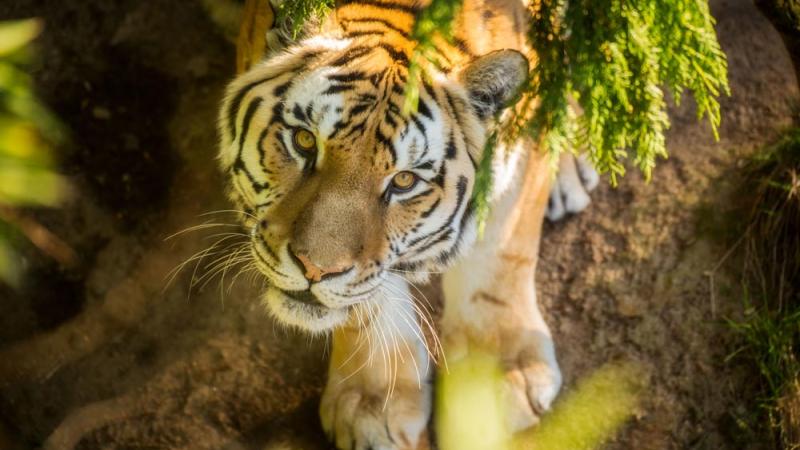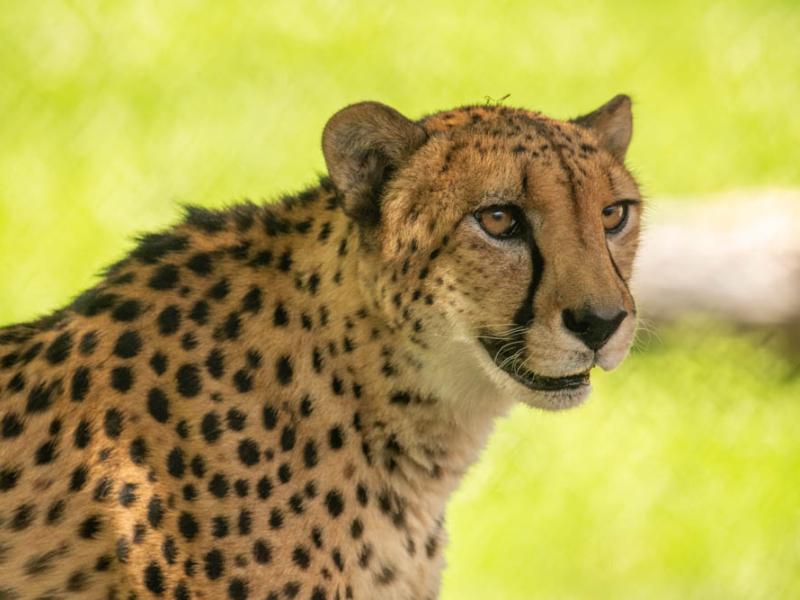Zoo says goodbye to beloved Amur tiger Mikhail

One day shy of his 20th birthday, Mik was the oldest of his extremely rare subspecies
The Oregon Zoo was deeply saddened today by the loss of one of its most beloved residents — Mikhail, a 300-pound Amur tiger whose playful exuberance belied his extreme old age.
"As old as he was, we knew, realistically, that this day would be coming," said Amy Cutting, who oversees the zoo's Amur cat area. "But even when you think you're prepared for it, you never really are."
Just one day shy of his 20th birthday, Mikhail — or Mik for short — was the oldest Amur tiger in any zoo accredited by the Association of Zoos and Aquariums, and he was considered to be among the oldest on the planet. He was humanely euthanized today following a decline in health related to his advanced age, Cutting said.
Wild Amur tigers typically live around 10 to 15 years, and the median life expectancy in zoos is 16 years for males, according to the AZA, which has established a Species Survival Plan for this highly endangered cat.
"Until recently, Mik was so playful and active you could easily think he was a much younger cat," Cutting said. "That's a huge testament to the care he received here. I couldn't be prouder of our keeper staff for everything they did to ensure he had a good life right up to the end."
To encourage activity and keep Mik's joints limber during his later years, caregivers taught the big cat to play "soccer": batting and chasing a big plastic ball along the floor of the moat surrounding his habitat.
Mikhail was born Oct. 31, 1998, at the John Ball Zoological Garden in Grand Rapids, Mich., and moved to the Oregon Zoo on Sept. 12, 2000.
Cutting said Mik's loss is all the more keenly felt coming so soon after the passing of Borris, another much loved and extremely old Amur cat, who died earlier this month.
Wild Amur tigers are at risk of extinction due to habitat loss and poaching. Around 500 are believed to remain in their home range. The Amur tiger species derives its name from the Amur River, which runs through the region of southeast Russia to which this subspecies is native.
More News

Take action: Protect wildlife by protecting their homes
Speak up to protect wildlife. Submit a public comment urging the government to keep the Endangered Species Act strong — including protections for habitat.May 8, 2025

Zoo mourns Strike, one of oldest male cheetahs around
At 15, Strike was considered geriatric for his species and was the second-oldest male cheetah living in an AZA-accredited zoo.May 8, 2025

Zoo says goodbye to Tilly, beloved otter mom
At 16, Tilly was considered geriatric for her species.April 30, 2025

